
Sharpening Knives
-
-
Why Does Only Japan Have a Culture of Sharpening Knives with Whetstones?
In this video, we explore how Japan’s blessed geography and geological layers produce rare natural whetstones, and how this has shaped the enduring tradition of sharpening with stones.
Why Does Only Japan Have a Culture of Sharpening Knives with Whetstones?
-
— A Unique Blend of Geology, Spirit, and Aesthetics That Forged a One-of-a-Kind Tradition
In many countries, when a kitchen knife becomes dull, the solution is simple: replace it.
But in Japan, knives are not thrown away — they are nurtured through sharpening.
This practice is more than maintenance. It is a centuries-old culture, born from geology, spirit, and aesthetics.So why did only Japan develop such a refined whetstone-sharpening tradition?
-
■ A Gift from the Earth: Japan, the Land of Natural Whetstones
Japan lies at the collision of four tectonic plates, creating unique geological conditions. Over millions of years, ancient sedimentary layers were pushed to the surface, producing rare, high-quality natural whetstones found almost nowhere else on Earth.
Kyoto became the center of this culture, with stones like Nakayama, Okudono, Maruoyama, and Aoto revered as treasures.
Among them, Kyoto’s finishing stones are legendary. They naturally release a fine slurry during sharpening, polishing the blade while refining its edge. The result is both razor-sharp performance and exquisite beauty. -

■ Why Other Countries Could Not Develop This Culture
Natural whetstones exist worldwide — Arkansas stones in the U.S., Ardennes Coticule in Belgium — but most are too hard, too coarse, or too limited to achieve the delicate finishes Japanese knives require.
Europe’s geologically stable environment also meant that ancient strata rarely surfaced, limiting access to suitable stones.
This scarcity fostered a culture of replacement and industrial maintenance, rather than the artisanal, hand-sharpening tradition that thrived in Japan. -
■ The Japanese Spirit: Tools as Partners
Sharpening in Japan is not just a technical act. It reflects a philosophy of respect for tools.
A knife is considered an extension of the chef’s hand — a trusted partner rather than a disposable object.
Sharpening becomes a ritual of gratitude and mindfulness, echoing the spirit of Zen meditation, the tea ceremony, and other Japanese arts. -

■ The Beauty and Philosophy of Sharpening
In Japanese culture, sharpness alone is not enough.
The subtle hamon (blade patterns), the polishing lines from the whetstone, and the mirror-like finish are all seen as expressions of the sharpener’s artistry.Through sharpening, a simple kitchen tool is transformed into a work of functional art, embodying both performance and beauty.
-

■ KIREAJI: Carrying This Tradition into Your Kitchen
The sharpness and durability of KIREAJI knives are the crystallization of Japan’s unique geology and its whetstone-sharpening culture.
Owning a KIREAJI knife is more than having a sharp blade.
It is an invitation to experience Japanese craftsmanship, mindfulness, and tradition in your own kitchen.For those who wish to refine their cooking, or simply enjoy the beauty of daily preparation, KIREAJI knives are far beyond tools — they are a way to connect with the soul of Japanese culture.
A journey of mastery begins at your cutting board.
With KIREAJI, discover the elegant art of sharpening and embrace the spirit of Japan.
The Roots of Japanese Sharpening: A Culture Born from Earth & Respect
-

Japanese sharpening is more than a maintenance task—it is a cultural tradition shaped by rare geology and deep respect for tools.
Japan’s unique natural stones create an unmatched polished edge, and sharpening is seen as a mindful ritual, not mere upkeep.
A knife is treated as a trusted partner, reflecting a philosophy where tools are valued, not discarded. -
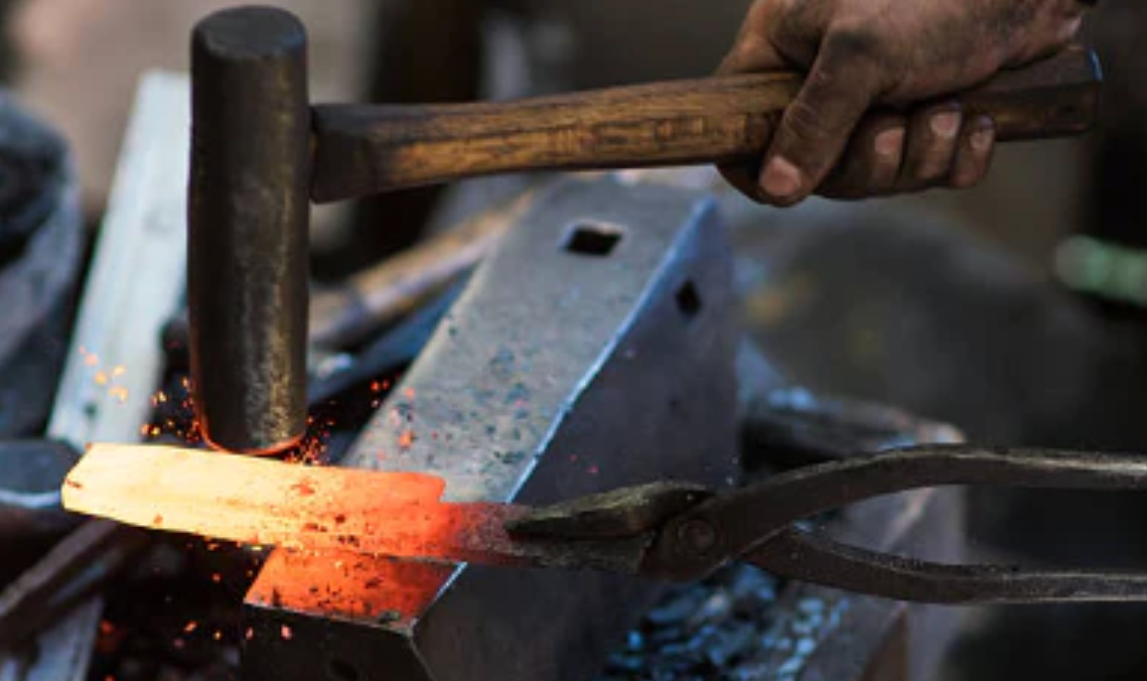
Ⅰ. Before Sharpening Knives
-
-
Sharpening a knife is not just a technical task—it is an art that reflects centuries of Japanese craftsmanship.
Before picking up a whetstone, it is vital to understand several key principles. By keeping these in mind, you can sharpen more effectively, solve common issues, and avoid mistakes that could damage your blade. -
1. The Importance of the Backside on Single-Edged Knives
For single-edged knives, the role of the backside is critical. The back of the blade is shaped with a unique structure called “ura-suki”, a hollow that reduces cutting resistance and makes sharpening easier.
-

-
This design works only when the back edge remains extremely thin—ideally under 0.5 mm, known as a “thread back.”
- If over-sharpened, the back becomes too thick, increasing resistance and reducing sharpness.
- On knives like the Deba, however, leaving the back slightly thicker can help prevent chipping when cutting hard materials.
Maintaining the right balance is the key to performance.
-

-
2. The Chef’s Defense Lies in the Back Surface
The urasuki is a chef’s greatest ally in achieving sharpness. Light pressure is usually enough to maintain a clean backside, but over time:
- Excessive pressure may cause the back edge to spread and dull.
- Warping may prevent proper contact with the whetstone.
When this happens, specialized repair—not ordinary sharpening—is required.
Deep chips or distortions should always be handled by professional sharpeners. For chefs, it is wise to keep multiple knives of the same type, so work is never interrupted.
-

-
3. Setting the Right Sharpness Goals
While sharpness is essential, “too sharp” can sometimes be a disadvantage.
- Knives like Deba or Garasaki, used on hard materials, are more prone to chipping if the edge is overly thin.
- Over-sharpening can also alter the familiar feel of your knife, slowing down your efficiency.
The goal is not always to make a knife razor-sharp, but to achieve the level of sharpness that suits its intended purpose and your working style.
-

-
4. Understanding “Kaeri” (Burrs)
During sharpening, a thin metal burr—called “kaeri,” “ha-gaeri,” or “bari”— forms along the opposite side of the edge being sharpened.
This is a sign that the sharpening stage is complete.
However:- Excessive burrs mean unnecessary steel removal.
- Toward the end of sharpening, burrs should become progressively smaller.
A skilled sharpener watches closely for these subtle changes.
-

-
5. Managing the “Mud” from Sharpening
Sharpening produces a slurry of steel particles and whetstone abrasives, known as “mud.”
- This mud acts as an additional abrasive, helping the blade sharpen faster and polish more smoothly.
- However, too much mud can reduce control and unintentionally affect areas of the blade that should remain untouched.
Some sharpeners therefore use “running water sharpening,” rinsing away the mud to rely only on the stone’s surface.
Adjusting between muddy sharpening and water sharpening is the secret to optimal results.
Beyond Technique: Understanding the True Foundations of Sharpening
-

Sharpening excellence comes from understanding the blade itself.
Mastery begins with the ura-suki, the burr, and the slurry, not just the motion of sharpening -
Ⅱ. Selecting the Right Whetstone Grit
-
-
The journey to a truly sharp knife begins with choosing the correct whetstone. Each stone has a specific role, and understanding grit differences is the foundation of proper sharpening.
-

1. Rough Stones (240–600 Grit)
These are repair stones, used when a knife has chips, dents, or when you need to create a completely new edge.
- They remove metal quickly and efficiently.
- Best suited for major corrections, not for daily sharpening.
-
2. Medium Stones (800–2,000 Grit)
This is the workhorse of sharpening. Medium-grit stones refine the rough edge created by coarse stones and prepare the blade for polishing.
- Essential for regular maintenance.
- Provides a sharp, functional edge suitable for most kitchen tasks.
-
3. Finishing Stones (3,000–8,000 Grit)
These stones transform sharpness into artistry.
- They create a mirror-like polish and an edge fine enough for the most delicate and precise cuts.
- Especially valued for Japanese knives used in sushi or kaiseki, where presentation is as important as performance.
-
Important Note on Grit Numbers
Keep in mind that grit numbers are not globally standardized. They can vary slightly by manufacturer. Always refer to the guidelines for your specific whetstone brand.
Ⅲ. Step-by-Step Knife Sharpening with a Whetstone
-
-

-
1. Assess Your Blade
Before you begin, carefully inspect your knife for any chips, bends, or nicks. Identifying these imperfections beforehand helps you plan whether simple sharpening is enough or if professional repair is required.
-
2. Prepare the Whetstone
Water is essential for sharpening. It acts as a lubricant, reduces friction, and prevents heat build-up that could damage the blade.
- Soak water stones (about 10–15 minutes) until no bubbles appear.
- For splash-and-go stones, simply wet the surface before use.
-
3. Find and Maintain the Angle
The sharpening angle determines the knife’s sharpness and durability. For most Japanese knives, the ideal range is 10–15 degrees, while Western-style knives are usually 20 degrees or more.
The key is not just the angle itself, but consistency—maintaining the same angle throughout the process. -
4. Sharpening Motion
Place the blade on the stone and glide it back and forth with smooth, controlled strokes, applying gentle, even pressure. Work from the heel to the tip.
Remember: let the stone do the work—too much force will damage the edge. -
5. Check for the Burr (Kaeri)
As you sharpen, a small metal burr forms on the opposite side of the edge. This indicates progress. Flip the blade and repeat until the burr is removed, ensuring both sides are evenly sharpened.
-
6. Clean and Store
After sharpening, rinse both the knife and whetstone thoroughly, and dry them completely. Store your knife in a safe, dry place to maintain its edge.
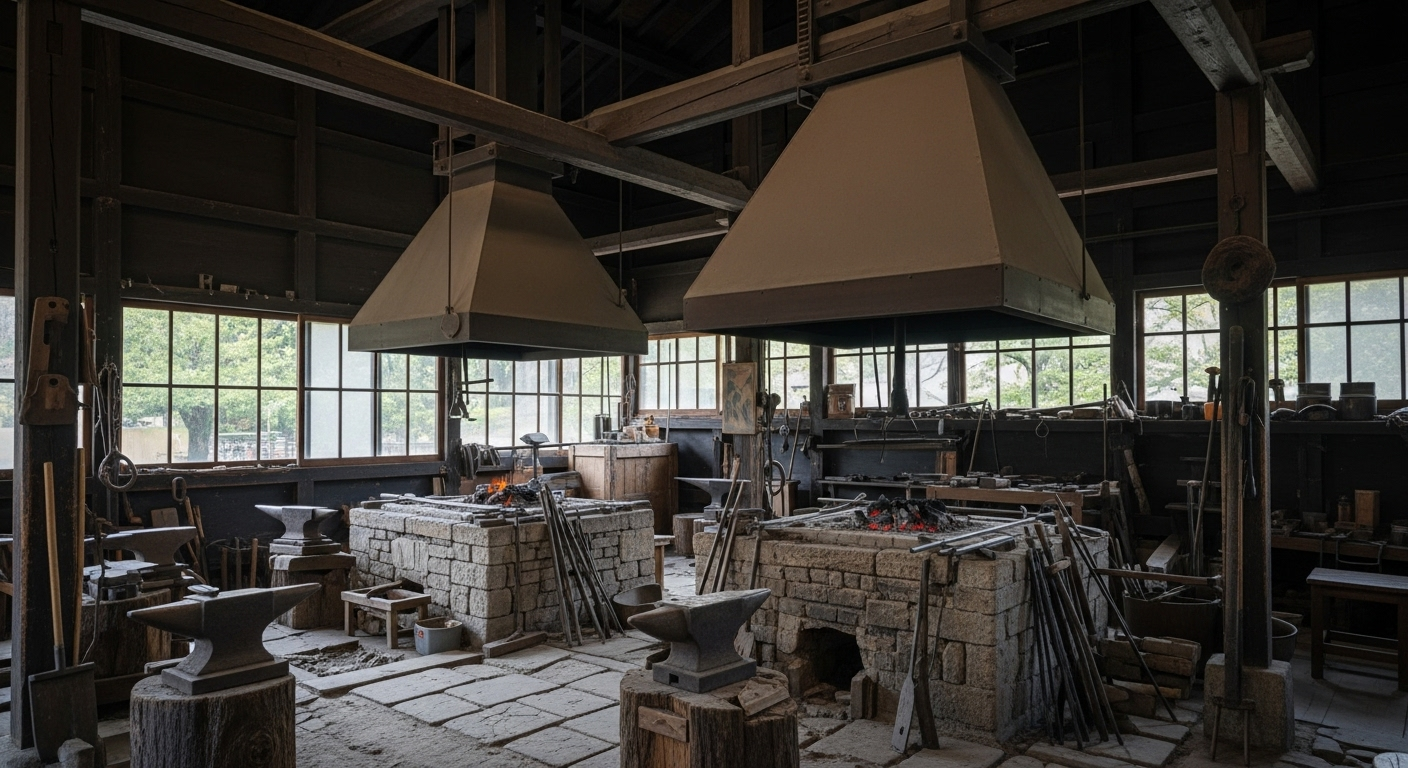
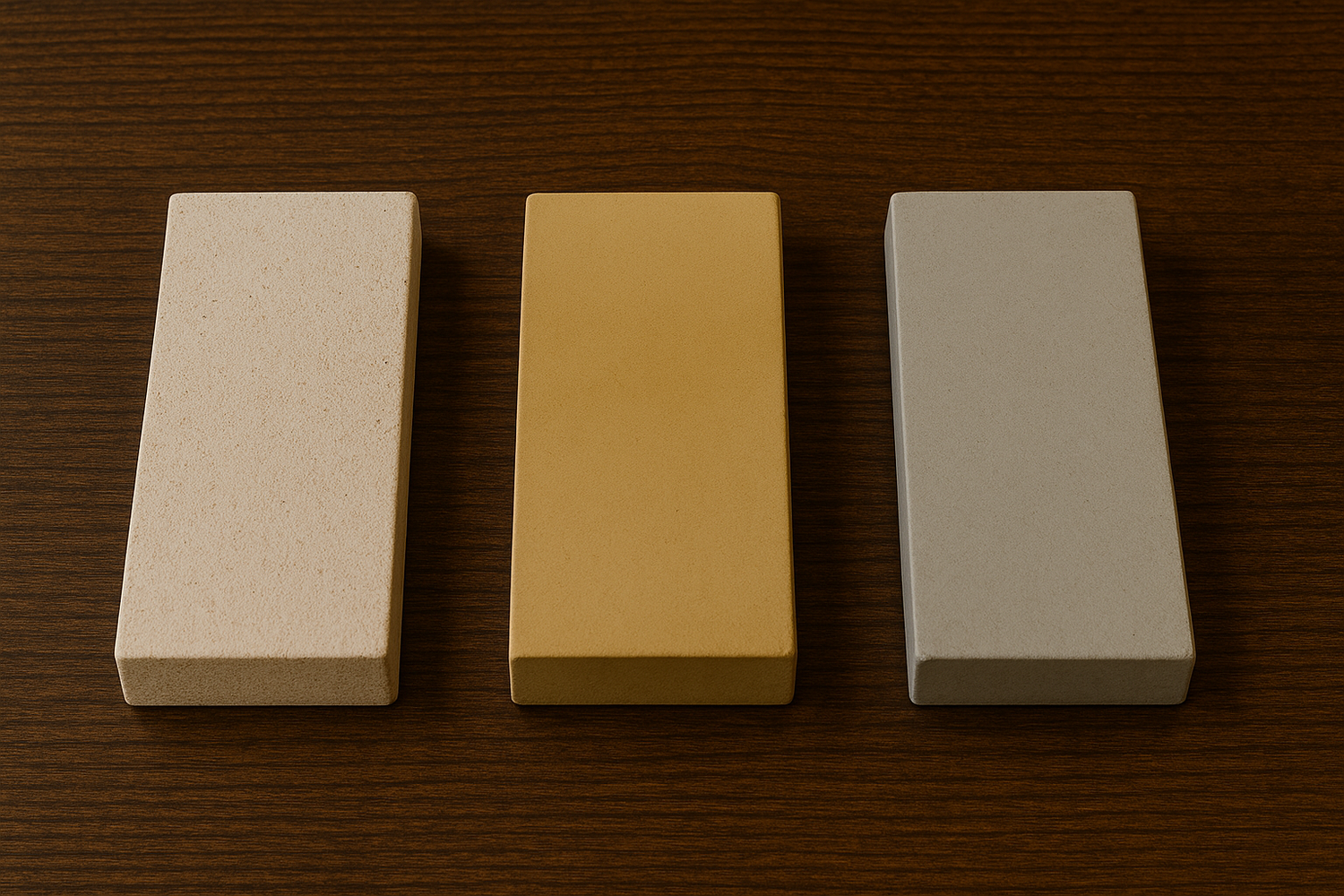
Types of Whetstones
Owning a fine knife means choosing the right whetstone to care for it. From coarse to finishing stones, each plays a role in sharpening and maintenance. Understanding their differences helps you keep your blade at peak performance and know how often to use each one.
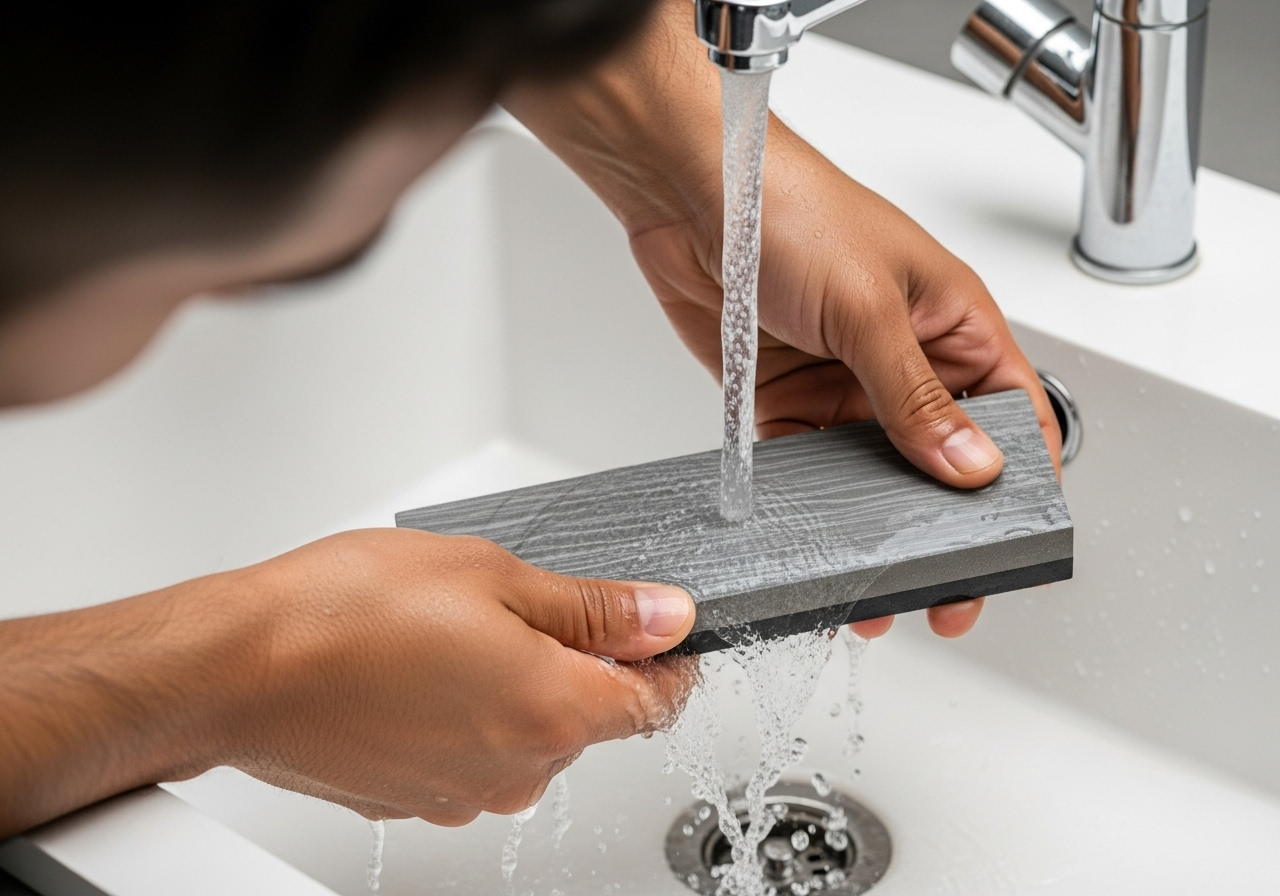
Daily Care of Whetstones
Whetstones need only minimal upkeep, yet issues like warping or denting can affect their performance. With proper care, your stone stays in top condition—ensuring precise, effective sharpening every time.
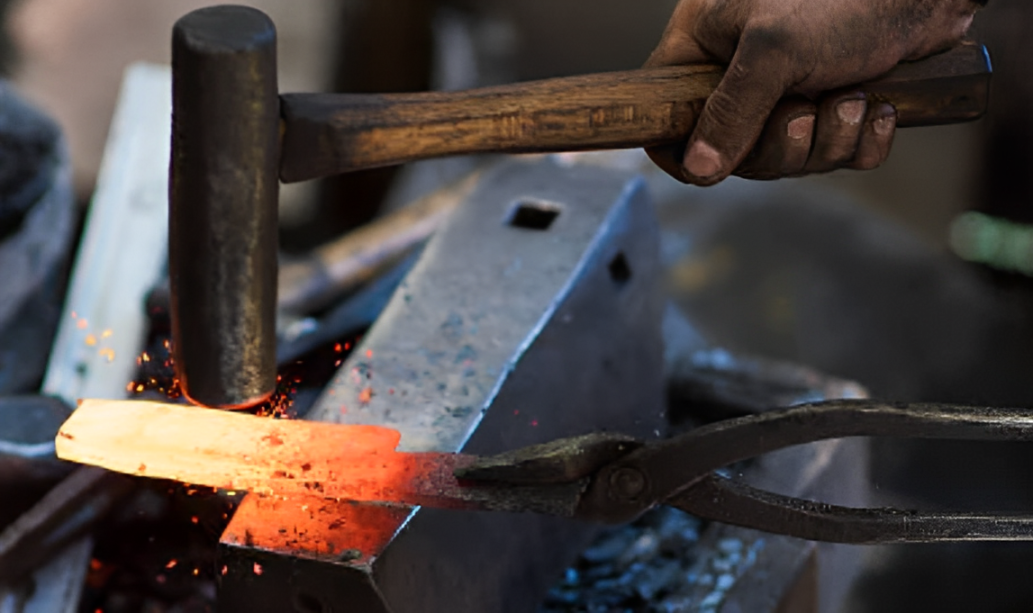
The Soul of Craftsmanship
-
Sharpening: The First Step Toward a Chef’s Future
Learning to sharpen knives is more than just maintaining a tool—it is the foundation of a chef’s growth. A knife that has been properly sharpened does not simply cut; it glides, it respects the ingredient, and it elevates the craft of cooking itself.
-
The sharpness of your blade reflects your discipline as a chef. A dull knife slows you down, bruises ingredients, and disrupts precision. In contrast, a sharp blade enhances freshness, presentation, and efficiency. The edge of your knife becomes the edge of your skill.
-
“To understand your tools is to understand yourself.” By learning sharpening early, you build harmony between hand and blade. Each stroke of the whetstone deepens your awareness, creating a rhythm where knife, ingredient, and chef move as one.
-
For aspiring chefs, sharpening is not just a chore—it is a rite of passage. It teaches patience, focus, and respect for the tools that shape your craft. Every time you sharpen, you are not only refining steel—you are refining yourself.
-
Start sharpening, and you start shaping your future.

Experience the sharpness trusted by 98% of Japan’s top chefs — handcrafted in Sakai City.
Through our exclusive partnership with Shiroyama Knife Workshop, we deliver exceptional Sakai knives worldwide. Each knife comes with free Honbazuke sharpening and a hand-crafted magnolia saya, with optional after-sales services for lasting confidence.
KIREAJI's Three Promises to You
-

1. Forged in the Legacy of Sakai
From Sakai City—Japan’s renowned birthplace of professional kitchen knives—each blade is crafted by master artisans with over six centuries of tradition. Perfectly balanced, enduringly sharp, and exquisitely finished, every cut carries the soul of true craftsmanship.
-

2. Thoughtful Care for Everyday Use
Every knife includes a hand-fitted magnolia saya for safe storage. Upon request, we offer a complimentary Honbazuke final hand sharpening—giving you a precise, ready-to-use edge from day one.
-

3. A Partnership for a Lifetime
A KIREAJI knife is more than a tool—it is a lifelong companion. With our bespoke paid aftercare services, we preserve its edge and beauty, ensuring it remains as precise and dependable as the day it first met your hand.















